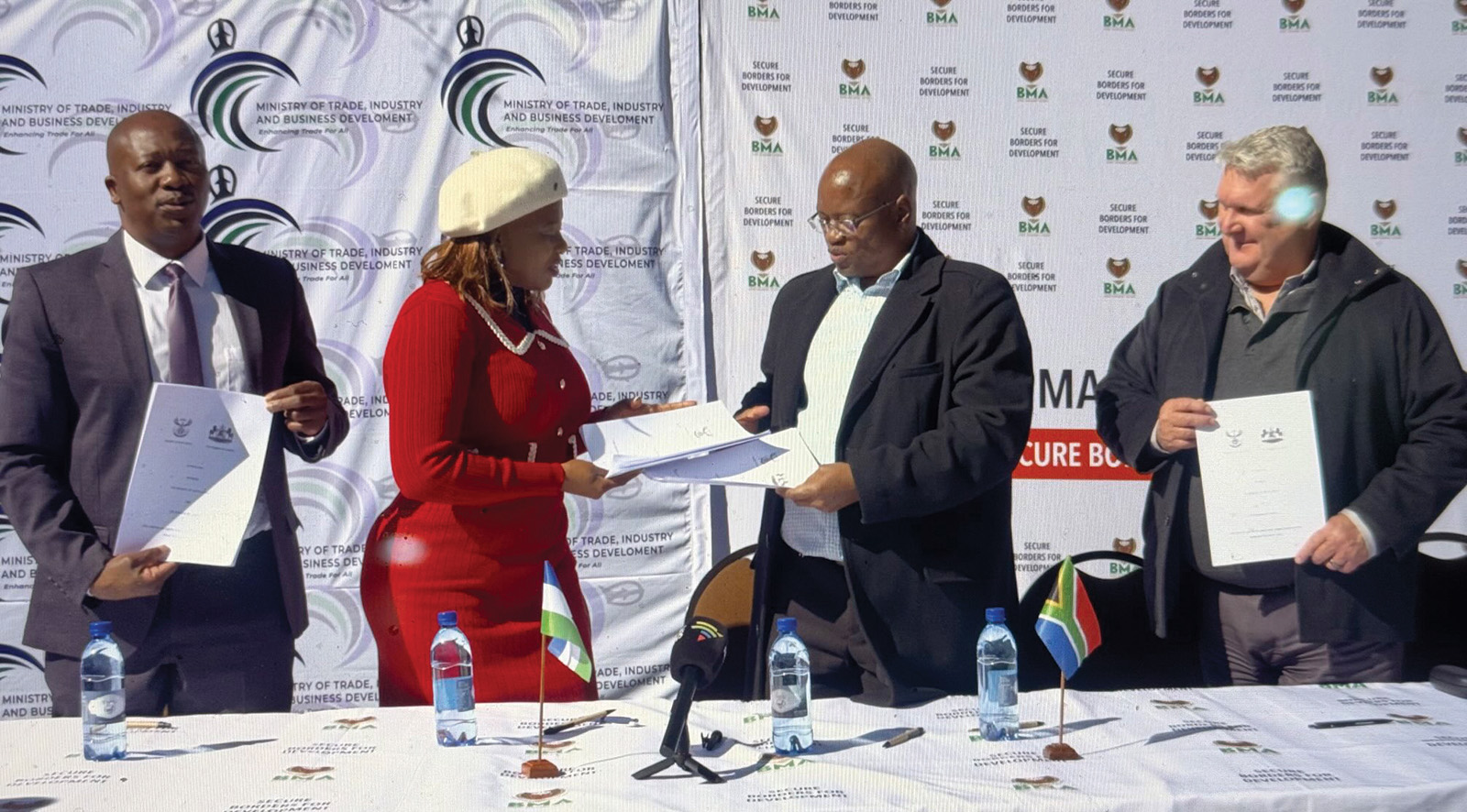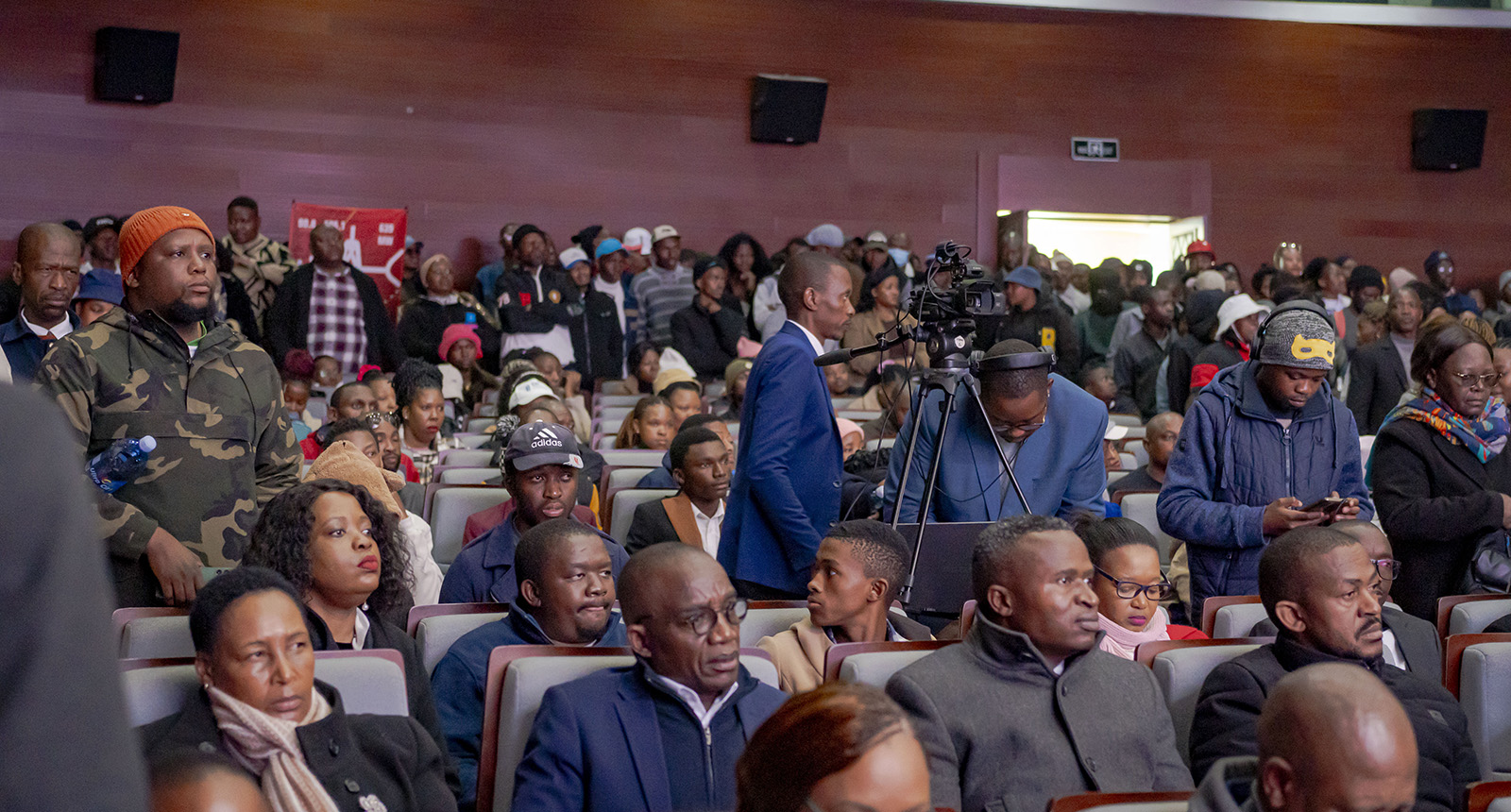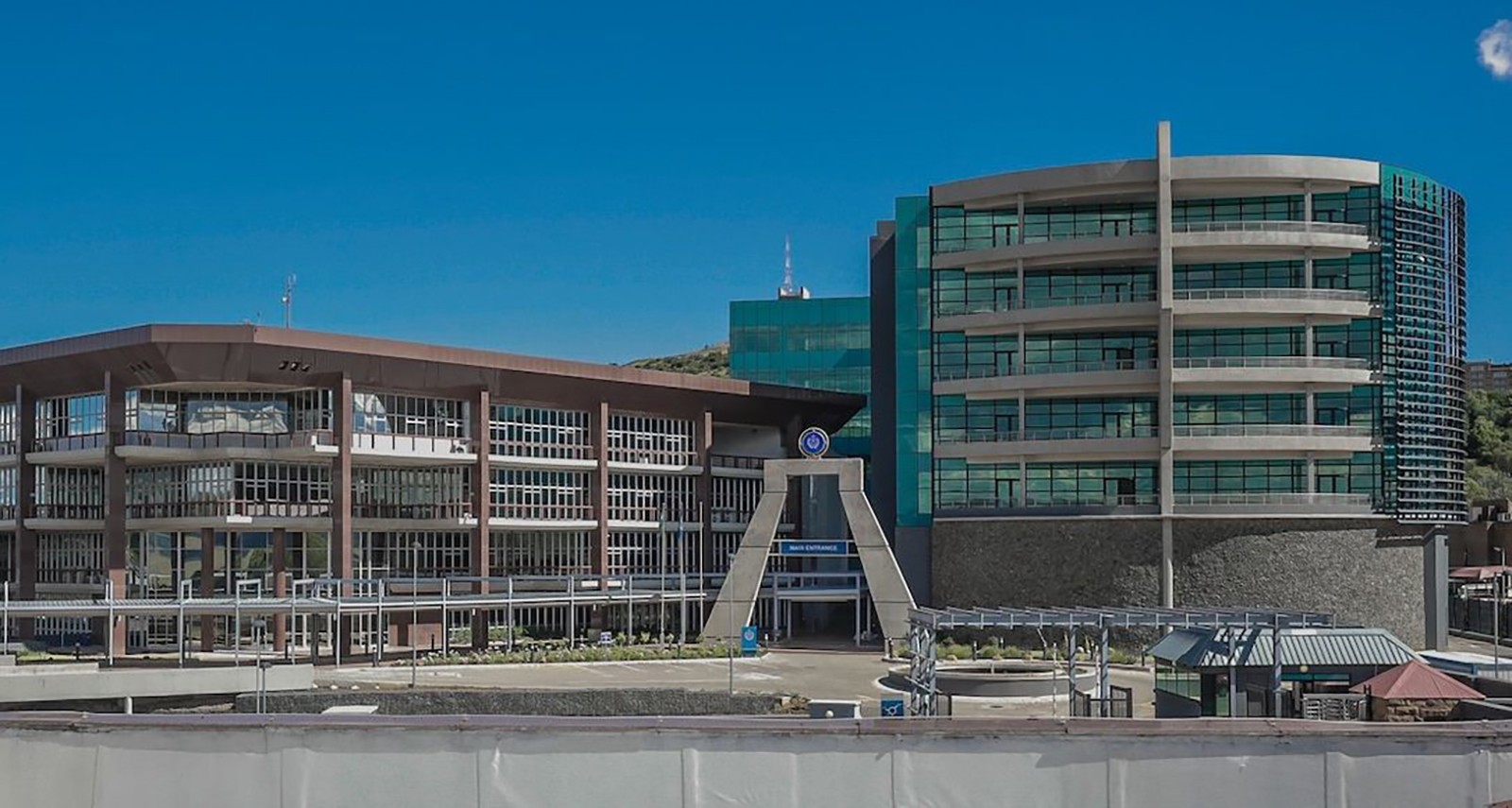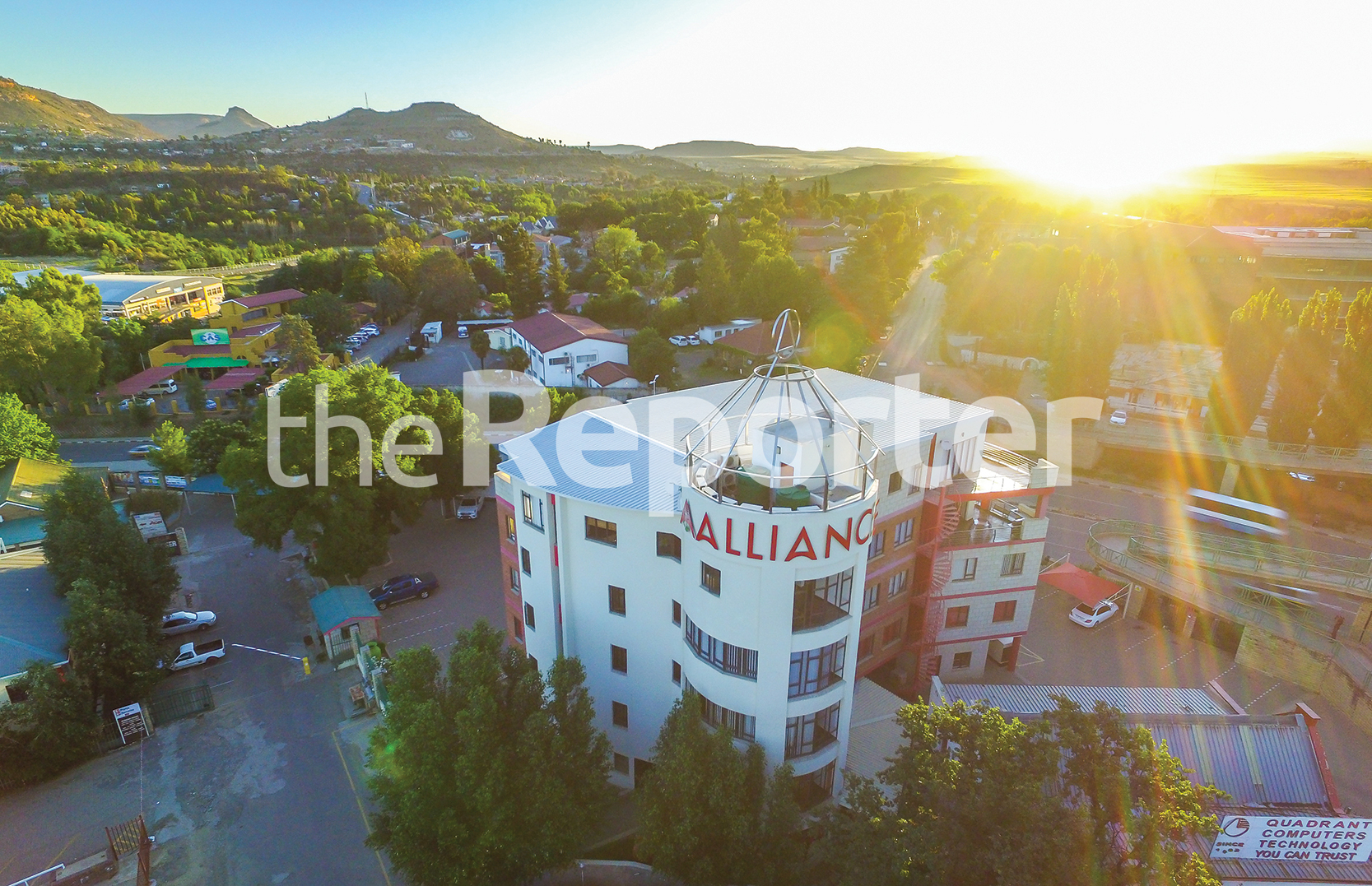New border plan to advance regional trade

SHARE THIS PAGE!
Lesotho and South Africa have signed a Joint Action Plan to implement Smart One-Stop Border Posts (OSBP) at the Maseru and Ficksburg ports of entry – an initiative aimed at streamlining trade, enhancing mobility, and modernising cross-border management systems.
The agreement was concluded at a two-day meeting of the Lesotho-South Africa Joint Steering Committee and Technical Working Group, which wrapped up in Ladybrand on Wednesday.
The OSBP model forms part of a broader strategy to introduce Smart and Coordinated Border Management (CBM) systems at key border posts across Southern Africa. The approach emphasises improved coordination, integrated procedures, and the use of centralised electronic processing, in the process reducing reliance on physical border infrastructure and speeding up the movement of goods and people.
The initiative will initially focus on three major border points: Maseru Bridge (Lesotho-South Africa), Oshoek-Ngwenya (Eswatini-South Africa), and Lebombo-Ressano Garcia (Mozambique-South Africa).
The commissioner and chief executive officer of South Africa’s Border Management Authority (BMA), Dr Michael Masiapato, said the signing marked the culmination of extensive bilateral engagements and a shared vision to modernise border operations.
“This initiative will significantly improve the facilitation of both goods and people at critical ports of entry. The OSBP will consolidate border control procedures into a single location, enhancing coordination and efficiency while reducing waiting times,” he noted.
Masiapato also announced the upcoming implementation of the Authorised Economic Operator (AEO) programme, which supports the broader vision of seamless, secure, and non-stop border transit. He stressed that ports of entry should remain transit points — not areas of prolonged occupation.
This move follows directives from President Cyril Ramaphosa of South Africa and Prime Minister Sam Matekane – who instructed the BMA to address long-standing border bottlenecks and promote efficient movement across the shared border.
At the same occasion, the South African Revenue Services’ Director of Customs, Beyer Theron, noted that both countries reaffirmed their commitment to integrated border management during a February 2024 bilateral meeting. That engagement laid the groundwork for the Joint Action Plan, developed under the Southern African Mutual Trade Facilitation framework with support from the World Bank.
“This meeting marks another important milestone in our journey to improve border management and facilitate trade,” said Theron.
For her part, the principal secretary in Lesotho’s Ministry of Trade, Industry and Business Development, Palesa Matobako, highlighted significant progress since February.
She said governance and coordination between the two countries had been strengthened through the Joint Steering Committee, which provides strategic oversight.
Matobako pointed to the establishment of four Technical Working Groups focusing on key areas: Business Processes, Legal, AEO, and Intelligence and Risk Management. These groups have already conducted a joint assessment at Maseru and Ficksburg border posts to identify infrastructure, operational, and policy gaps. Their findings have informed a draft blueprint now awaiting validation by both governments.
Among key achievements is the launch of a bilateral AEO programme between the Revenue Services Lesotho (RSL) and the South African Revenue Service (SARS), under the Southern African Customs Union (SACU) framework.
“Another highlight is the successful immigration co-location pilot at Maseru Bridge, which has improved processing times and received positive feedback from citizens,” Matobako added.
She also cited the launch of a comprehensive Time Release Study (TRS) aimed at identifying areas in the clearance process that require simplification, automation, or policy reform.
On the domestic front, Lesotho has begun Phase 2 of its National Single Window programme to digitise and streamline import and export permit processes—reducing both time and transaction costs.
Further developments include procurement of a new immigration system, upgrades to agricultural systems (including e-Phyto capabilities), and the piloting of electronic cargo seals to improve cargo traceability and build cross-border trust.
Matobako emphasised that these reforms reflect Lesotho’s strong commitment to regional integration and trade facilitation.
“All these priorities are aligned with the spirit of cooperation under SACU, SADC, and the African Continental Free Trade Area (AfCFTA). They represent our shared determination to eliminate trade barriers, modernise border systems, and promote inclusive economic growth in the region,” she said.
The Commissioner of Client Services and Head of Customs at the Revenue Services Lesotho (RSL), Rakokoana Makoa, stated that efforts are underway to upgrade key ports, particularly Ficksburg and Maseru.
“These two ports each process around 200 trucks daily and generate an estimated M30 billion annually for RSL,” Makoa said.
He added that enhancing efficiency at major ports would reduce delays for both cargo and people, ultimately boosting economic growth.
“When there is smooth operation at the ports of entry, it creates a more attractive environment for investors,” he noted.
Makoa also acknowledged that while smaller border posts currently have a limited impact, improvements at the major ones will have positive spill-over effects, eventually benefiting all ports through expanded services and enhanced cargo flow.
In another development, the National Trade Facilitation Committee called for borders posts improvements.
Committee member Thabo Qhesi raised concerns over the lack of development at key border posts in the Mokhotlong and Quthing districts, stressing the urgent need for modernisation to reduce trade costs.
In an interview on the sidelines of the meeting, Qhesi indicated that the non-commercialised border posts between South Africa and Lesotho, specifically Sani Pass and Tele Bridge, are increasing operational costs for businesspeople in the two districts.
“Consumers from Mokhotlong and Quthing continue to face high trade facilitation costs because their main ports of entry are not commercialised. For instance, traders from Quthing often have to travel all the way to Mafeteng just to cross the border,” he explained.
He further pointed out that there are 2,300 licensed traders in Quthing and 2,600 in Mokhotlong, according to the Ministry of Trade, Industry and Business Development. Most of them source goods from Pietermaritzburg and Durban but cannot re-enter through Sani Pass due to its limited functionality, forcing them to detour via Butha-Buthe before proceeding to Mokhotlong.
Qhesi reiterated that commercialising Sani Pass and Tele Bridge would streamline trade, reduce transport costs, and improve turnaround times for import, export, and transit procedures.


New border plan to advance regional trade
7 days ago
Foul language lands man in court
7 days ago
Youth demand action on unemployment
7 days ago
Ex-ministers threaten to sue govt
7 days ago
CBL launches LERIMA awareness campaign
7 days ago



Alliance extends deal with premier league teams
10 days ago